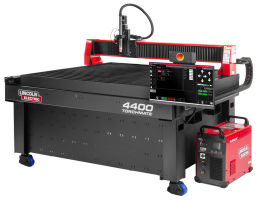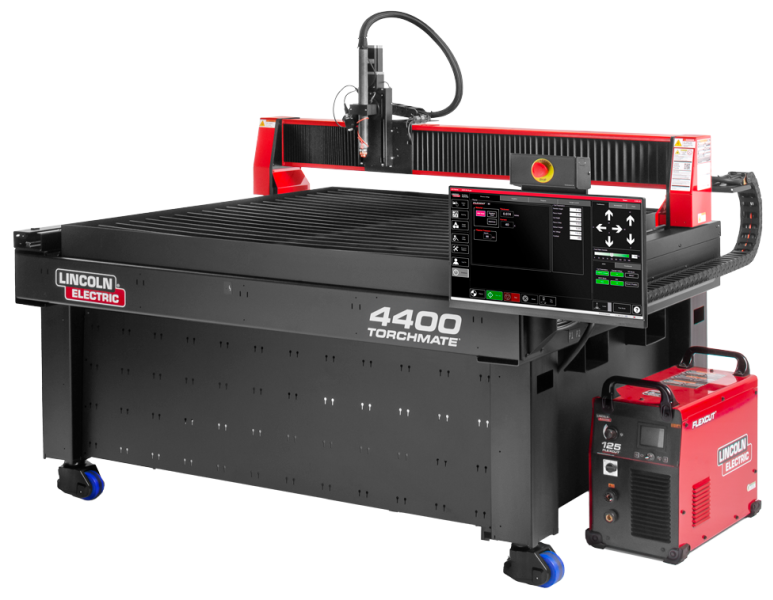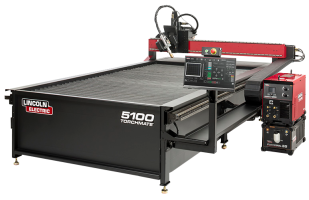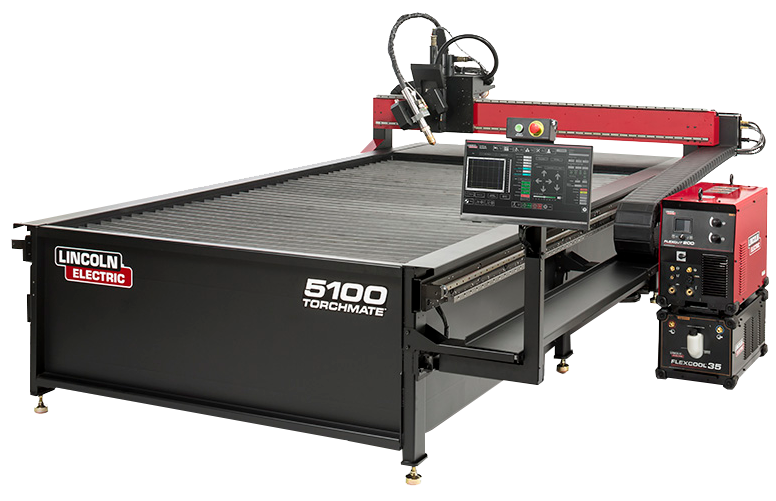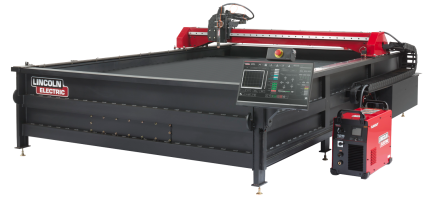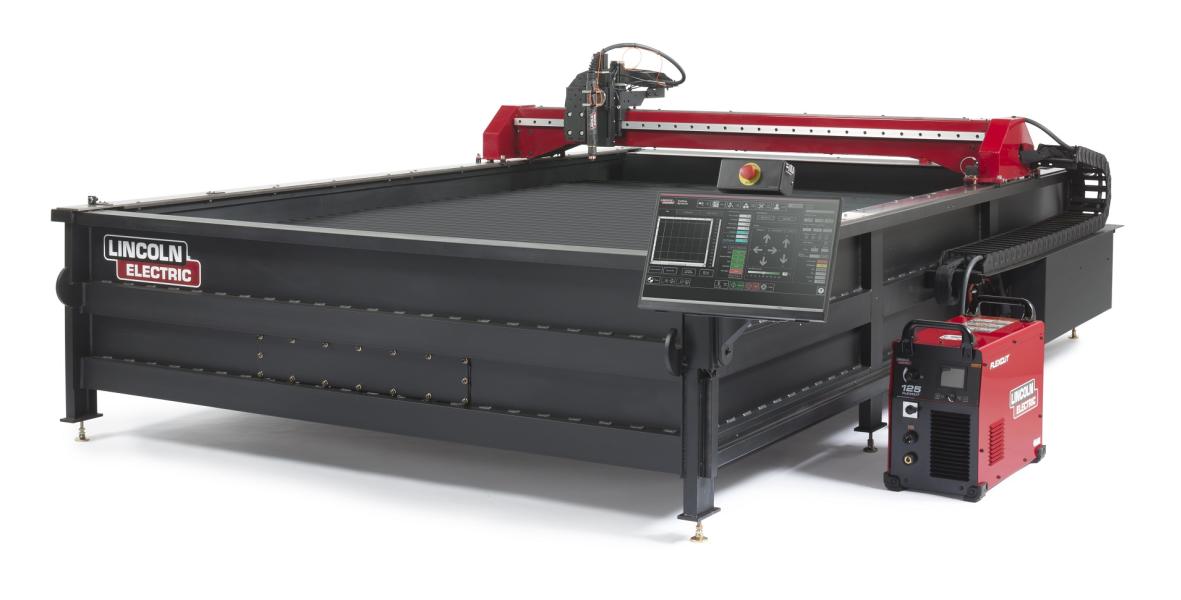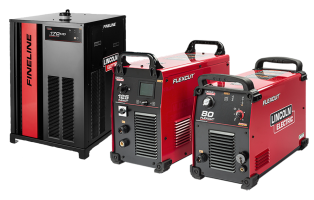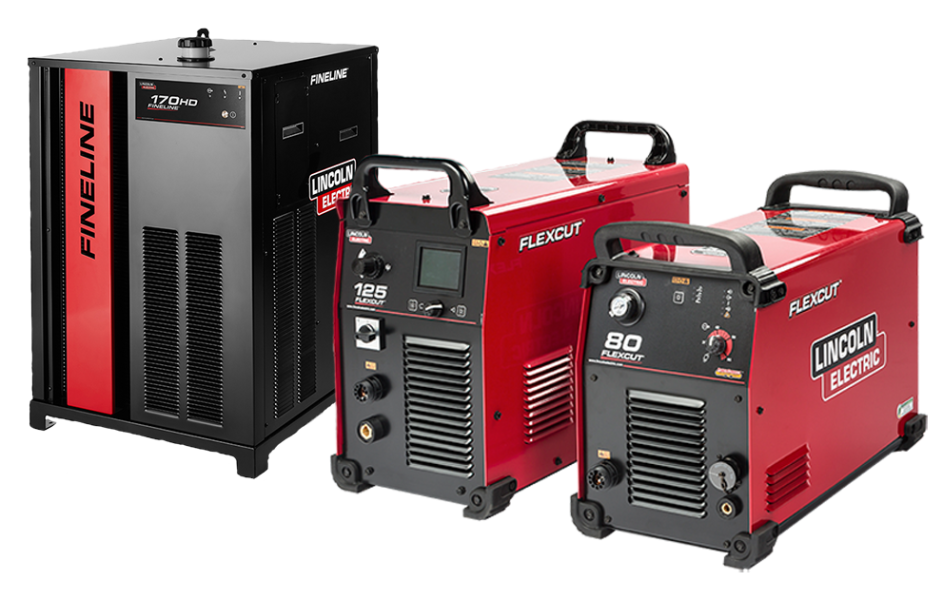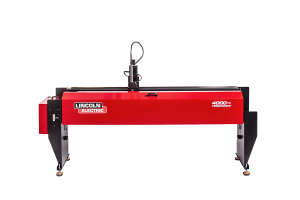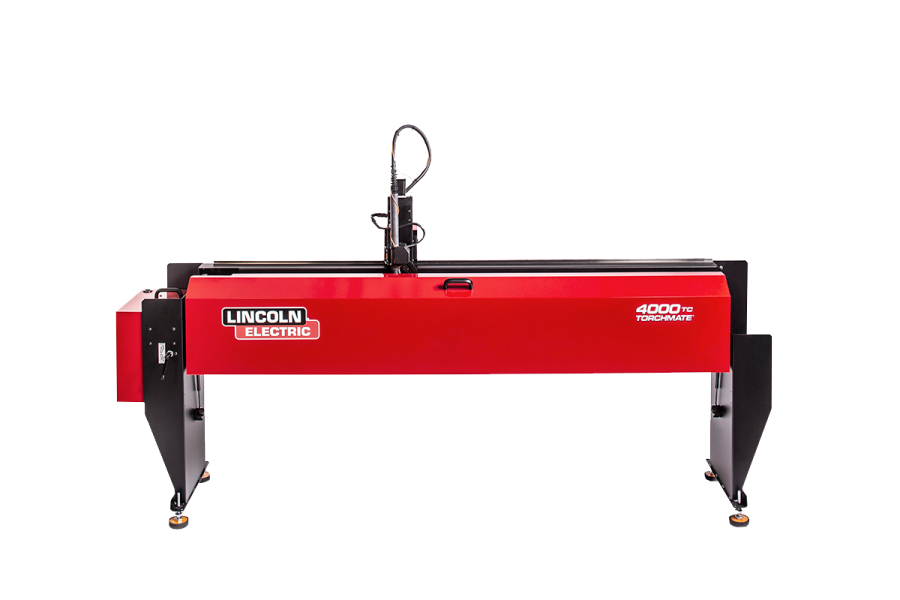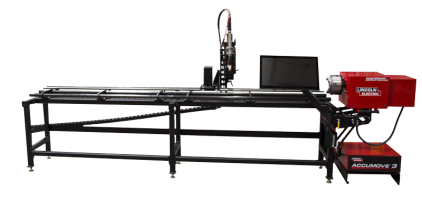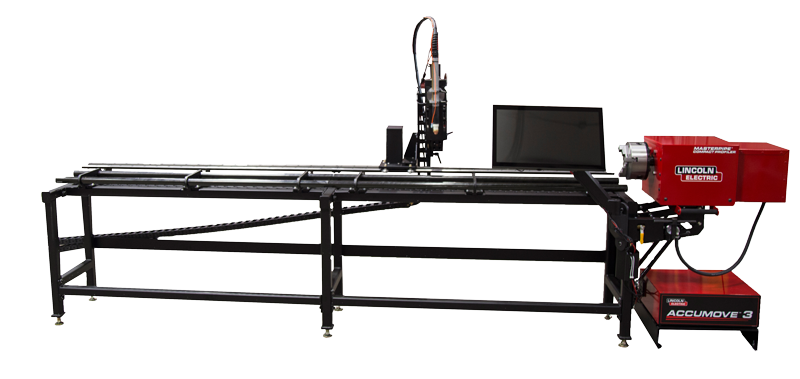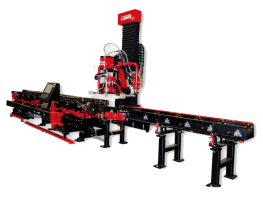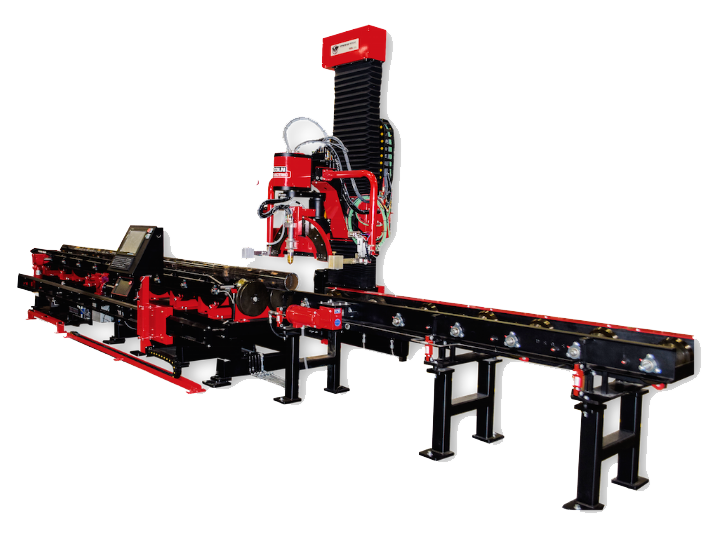Torchmate White Papers

FF Journal has featured an article from
Torchmate's Product Manager, Josh Schohn on what the future holds for CNC machining. With technological advances, CNC machines are becoming more affordable and versatile, and in turn changing the face of manufacturing. The Torchmate 2x2 (below) is an example of the available CNC machines that are compatible for hobbyists and smaller shop owners. CNC machines were once limited to larger manufacturers due to cost and size.
Ruffstuff Specialties of Loomis, California is a company born of imagination and the will to succeed. Starting from humble beginnings their story tells a tale of what seems a bygone era. The American dream of entrepreneurship is not wasted on this small manufacturing company who has worked with a smaller budget capitalizing on the industrial slow down of the great recession. They have tasked machine shops and jobber shops to help their company grow and develop a market for home fabricators looking for an assortment of brackets and tabs.
An “antenna” converts electric power into electromagnetic (radio) waves—or the other way around. Any wire carrying an electrical signal makes itself a broadcast antenna by sending out electromagnetic waves and any nearby wire becomes a receiving antenna when its location in the path of electromagnetic waves creates a signal in the wire. If this antenna effect transfers unwanted current and voltage to the receiving wire, it is called electromagnetic interference (EMI). EMI can result in difficult cutting operations and problems with cut quality.
Comienza una nueva revolución industrial, la revolución industrial automatizada. El Control numérico por computadora (CNC), es el motor que se encuentra impulsando a la tecnología robótica, llevando a las operaciones industriales a nuevos niveles de eficiencia.
Torchmate CNC cutting systems is offering affordable cnc cutting machinery to shop classes in schools giving teachers and students hand on lessons to teach design and manufacturing skills to the next generation of airplane builders, automobile manufacturers, and engineers
Torchmate deeply discounted and shipped a Torchmate 3 CNC cutting system to Workshops for Warriors which helps teach military veterans technical job skills preparing returning soldiers for careers in manufacturing.
At the Academy of Arts, Careers and Technology in Reno, Nev., students are learning to fabricate and prototype on the same Torchmate robotic technology that is the preferred tool of aircraft engineers, ship builders and the U.S. military.
What does buying an industrial CNC plasma cutting system and riding the New York City subway have in common? The sheer size and complexity alone from a "newbie's" perspective could send anyone running in the opposite direction. However, if you are planning on walking the streets of NYC, it is going to take you a long time to get to where you are headed.
So you want to purchase a plasma cutter! It's kind of a bewildering prospect to select a piece of equipment that is new to you with so many manufacturers and models to choose from.
Plasma cutters work by sending an electric arc through a gas that is passing through a constricted opening. The gas can be shop air, nitrogen, argon, oxygen. etc. This elevates the temperature of the gas to the point that it enters a 4th state of matter. We all are familiar with the first three: i.e., solid, liquid, and gas.
The plasma-arc process had its origin almost 50 years ago, during the height of World War II. In an effort to improve the joining of aircraft materials, a method of welding was developed that used a protective barrier of inert gas around an electric arc to protect the weld from oxidation.
You will fabricate the frame out of 3" square x 1/4" wall tubing you purchase locally. Full plans are included.
Mr. Bucknam, who had previous patents going back to 1916 designed this as a cutting machine for trimming the flanges on boilers. It uses a pivoting column that supports a track extending outward from the column. A carriage, mounted on the track, rolls in and out as a roller follows the profile of the flange.
The most limiting factor of any CNC cutting machine is the size of the plate that can be cut without interruption. Since most material comes in at least a 4' x 8' size, your cutting table should be at least that size.
A pretty good indicator of the reliability of a company is how long it has been around! The photo below shows a number of National magazines from 1980 - 1982 containing one to four page feature articles on our Torchmate cutting machines. Our Torchmate pantograph flame cutting machine won the "Product of the Year" award in 1980 from Welding Design and Fabrication Magazine.
Plasma arc is a marvelous process, allowing you to cut non-ferrous metals as well as mild steel. However it does have some limitations. We believe that you should be aware of what is and what is not possible using plasma, regardless of whose CNC machine you purchase. Plasma will produce good results for perhaps 95% of the applications out there, but you're not going to cut watch parts with it.
In the above photo, a 4 foot square table has been placed inside a 5' x 8' capacity Torchmate 2 machine. The dramatic size difference illustrates the tremendous advantage of a full sized machine over a small 4' x 4' unit which requires you to constantly move and realign (index) your material.
Purchasers of our Torchmate 2 gantry kits are supplied with a digital 3-D model of the completed machine. They can rotate it, and zoom in to see the finest detail from any angle, helping to make the kit's completion easy and fun. Full instructions are also provided. Viewing the 3-D model requires the SolidWorks viewer, which can be downloaded free at:
http://www.solidworks.com.
Depending on whose web site you visit, you will be offered a variety of reasons why their type of electronics and motors are better than the rest. The purpose of this page is to give you the straight facts, without distorted torque figures or unrealistic cutting speed claims.
The Torchmate CNC machine cuts out the entire 4' x 4' plate full of owl shapes automatically from 1/8" mild steel. The finished owls measure approximately 8" x 8", and sell wholesale to dealers for $20 each. The entire run of 33 owls was completed in one hour, at a cost $1.75 each in steel and plasma torch consumables. That comes to $602 profit for an hour's work.
It is no secret that manufacturing is rapidly transforming from a hands-on, drill-cut-and-weld field to an industry that is automated, technical and computerized. These new technical manufacturing techniques require a workforce that is highly trained on the computer systems and automated machinery that is now a part of fabrication at all levels — from airplane builders and off-shore oil rig manufacturers to mechanics and small shop hobbyists.
There is a new industrial revolution in the making, the automated industrial revolution. Computer numerical control (CNC) is the engine that is driving robotic technology, taking manufacturing operations to new heights of efficiency.
CNC has been around since the late 1950’s, but continuous improvements in computer technologies and programming have made possible what seemed like science fiction just a few short years ago. The major thrust now is educating a new generation of workers to program, operate, and maximize the capabilities of these amazing robots.
Most people do not buy personal CNC (computer numerical controlled) cutting centers every day. In fact, this technology used to be reserved for only the deep-pocketed machine shop elite. So, when I took the time to consider what most home shop machinists might go through when they set up their first system, I knew I would have to take into account the fact that there is a large variation in individuals’ experiences with CNC cutting machines.
It might go against our preconceived idea of the hands-in-the-soil farm worker, but over the last decade, the American farmer has gone high-tech. GPS-unit-controlled tractors, computer-automated spraying, and CNC machine manufacturing are just three of the ways that farmers are squeezing out more productivity and increasing efficiencies by harnessing technology.
My expertise is with CNC (Computer-numeric-controlled) automation, and how it allows farms to repair, customize or fabricate the machinery they need to plow or harvest their crops quickly and efficiently on-site. Here are three ways a CNC machine can save farmers and farm repair shops time and money.
Plasma Cutting Invented
During decade following World War II, engineers discovered that, by sending an electric arc through a pressurized gas passing through a nozzle, the temperature of the gas can be raised so high that the gas becomes a plasma. That plasma can be used for cutting metal—and we call it “plasma cutting” today.
You may have seen settings in your CNC Plasma Cutting design software, like Torchmate CAD-CAM, that specify Conventional or Climbing cutting, and wondered about the terminology’s meaning, and why we always select Climbing.
The concept springs from the world of mechanical machining and how milling machines cut metal with rotary cutters.
What does arc length have to do with quality?
A better start means an easier finish
Whether you have come up the metal cutting ranks using a saw, cutoff wheel, snips, oxy-fuel torch, and hand-held plasma torch, or you have started right out with CNC plasma, you’ll have come to understand the value to you and your customers of cutting a part with high-quality edges on the outside of parts and in the cutouts. The straighter and smoother the cut edge, the less finish work you’ll need to add to your part.




